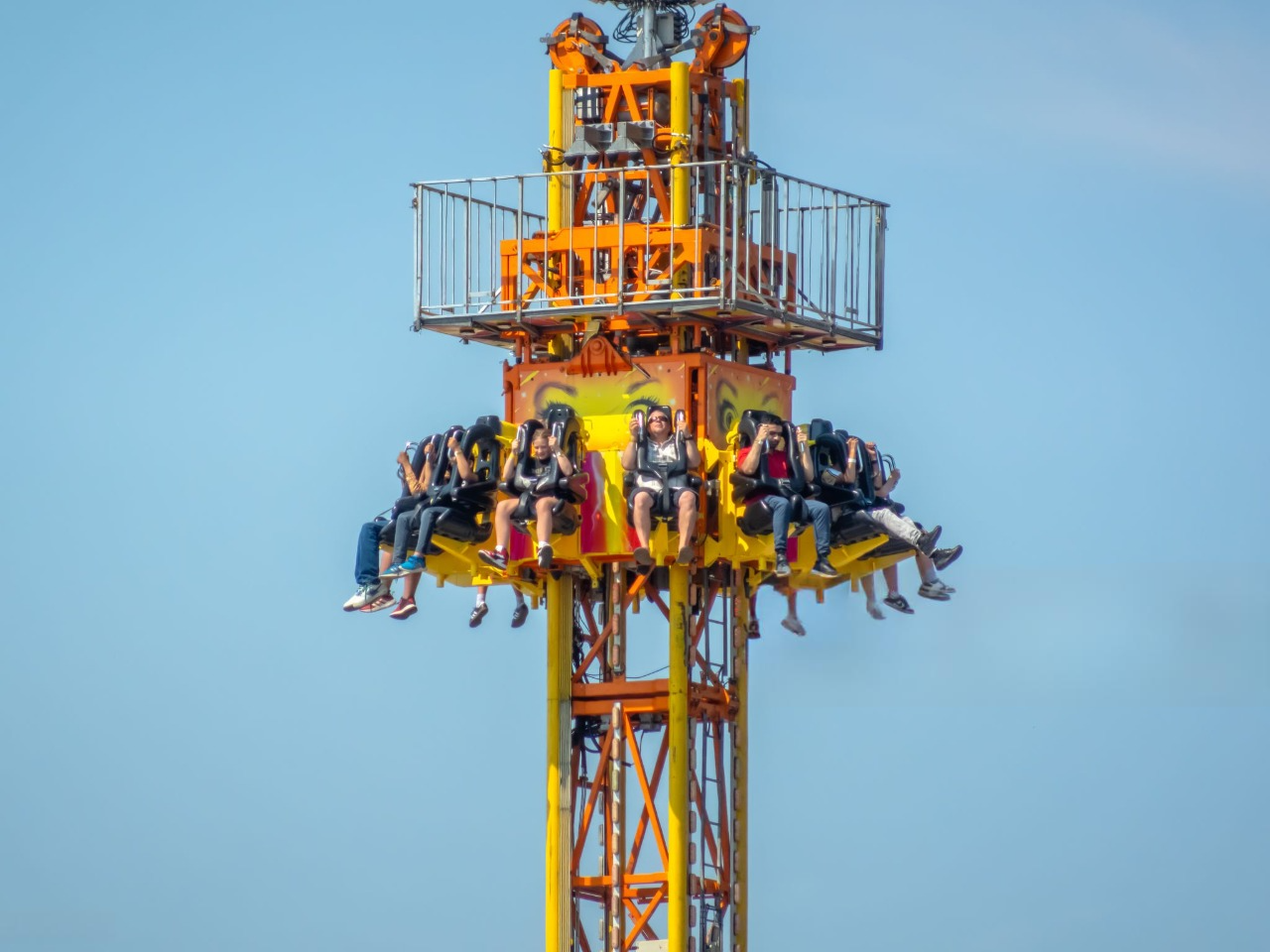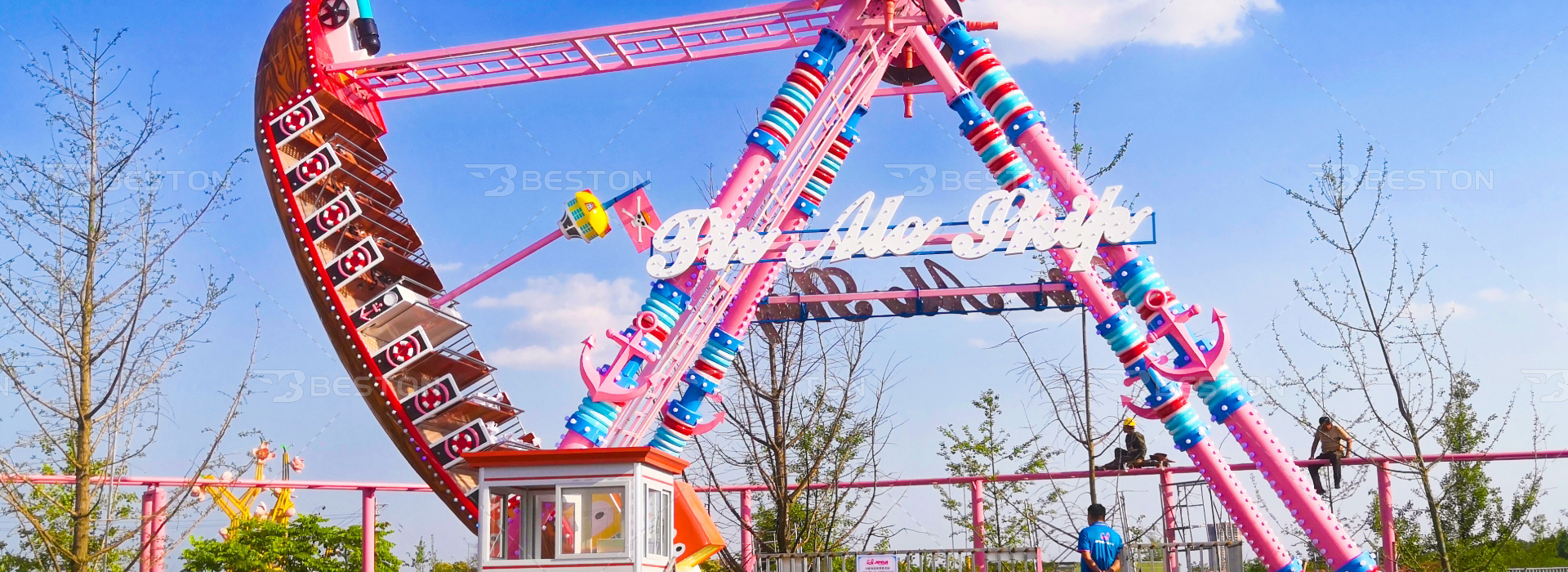Why “Check-In Value” Matters for Modern Attractions
In the age of social media, visual appeal and shareability are core criteria for selecting amusement park rides. Beyond mechanical function and thrill factor, today’s most valuable rides are those that become viral magnets—popular “check-in” spots where guests line up not just to ride, but to capture and share moments online. This trend directly influences foot traffic, visitor dwell time, and ultimately revenue across adjacent zones such as food courts, merchandise kiosks, and VIP experiences.
To qualify as a high-impact photo hotspot, an attraction must combine iconic visuals, motion dynamics, and emotional engagement. Structures with towering heights, dynamic lighting, and open-air exposure tend to perform best, especially when designed with social sharing in mind. Placemaking, theming, and background scenery are also pivotal. A well-placed ride becomes more than just a thrill—it becomes an experience ecosystem.
Visual Dominance with Vertical Motion
Rides that dominate the skyline naturally attract attention. They serve as orientation landmarks within the park and anchor the visual storytelling of themed zones. Among vertical attractions, the free fall tower holds distinct competitive advantages. With its soaring structure and dramatic plunge mechanism, it not only captivates onlookers but also delivers a moment of pure emotional climax—ideal for on-ride photos and reaction videos.
Its versatility also adds to its popularity. Variants include single-shaft drop towers, rotating seats, and multi-car configurations. Incorporating RGB lighting strips or projection mapping increases nighttime appeal, while custom theming boosts its integration into fantasy, adventure, or sci-fi zones. Moreover, its compact footprint makes it suitable even for medium-sized parks aiming for skyline presence.

Partnering with Proven Ride Suppliers
Visual magnetism alone is insufficient without operational stability and safety. Collaboration with experienced amusement rides companies ensures compliance with international safety standards, reliable maintenance support, and upgrade flexibility. These companies provide modular designs, advanced control systems, and smart diagnostics that keep high-profile rides operating smoothly—even during peak seasons.
Choosing a reputable manufacturer also opens the door to semi-custom or fully customized rides that align with a park’s unique branding strategy. Whether it’s through color schemes, LED sequencing, or interactive queue zones, supplier experience plays a pivotal role in turning an average ride into a flagship attraction.
The Allure of Synchronized Motion
Some of the most captivating rides don’t just rise—they swing, rotate, and oscillate in mesmerizing patterns. The pendulum amusement ride exemplifies this synergy. Its massive arc, coupled with rotating seats and synchronized lighting, produces hypnotic kinetic energy that draws both riders and spectators. Visually, it creates a perfect blend of chaos and order, making it ideal for social media videos and drone photography.
For park owners, pendulum rides offer strong ROI by functioning as high-capacity crowd-pullers. Their motion can be adjusted for various age groups or thrill levels, and they can be themed in pirate, fantasy, or cosmic styles. Their consistent performance across cultural markets—from Asia to Europe—proves their universal photogenic appeal.

Balancing Nostalgia and Novelty
While high-tech rides dominate headlines, some classic attractions remain iconic precisely because of their timeless charm. The pirate ship amusement ride falls into this category. Its recognizable swinging motion, evocative nautical theme, and accessible thrill level create a multi-generational draw. It resonates with both children and adults and is often positioned near water features or tropical-themed zones to reinforce its visual narrative.
From a check-in perspective, pirate ship rides benefit from high visibility and dynamic motion. Riders’ silhouettes against the sky or themed background make for compelling photos. Enhancing the experience with sound effects, smoke cannons, or integrated storytelling increases its shareability, giving it a nostalgic yet relevant edge in modern amusement design.

Strategic Placement and Surrounding Design
No ride becomes a check-in hotspot in isolation. Surrounding infrastructure, landscaping, and crowd flow all contribute to its popularity. Parks should prioritize backdrop aesthetics, lighting consistency, and accessibility when selecting locations for major visual rides. Integration with pathways, viewing platforms, and photo booths amplifies social engagement and maximizes time-on-site.
Additionally, consider sightline engineering. The best check-in rides are visible from multiple approach angles, including entrances, food courts, or resting areas. Their forms—whether vertical like a drop tower or wide like a pendulum—should contrast or complement surrounding structures to create focal hierarchy in the guest journey.
Leveraging Check-In Rides for Brand Value
Check-in attractions serve more than entertainment—they shape the park’s identity. Guests tag the park in their content, expanding digital visibility without additional marketing costs. Branded hashtags, embedded QR codes, and ride-specific souvenirs (such as photo prints or wearable tech) reinforce the association between the ride and the park’s story.
These rides also serve as benchmarks for expansion planning. A park’s first viral ride sets the tone for future development and can inform design language across new zones or partner properties. Parks that proactively study the check-in behavior of guests gain a strategic edge in retaining visitor attention and increasing revisit likelihood.
Conclusion
In today’s experience economy, the most successful amusement rides are those that combine mechanical thrill with aesthetic spectacle. From the adrenaline-spiking free fall tower to the crowd-drawing pendulum amusement ride and nostalgic pirate ship amusement ride, each offers unique visual and emotional cues that encourage social sharing. Partnering with top-tier amusement rides companies, applying thoughtful spatial planning, and prioritizing aesthetic engineering will ensure these attractions do more than entertain—they’ll become icons that define the park.